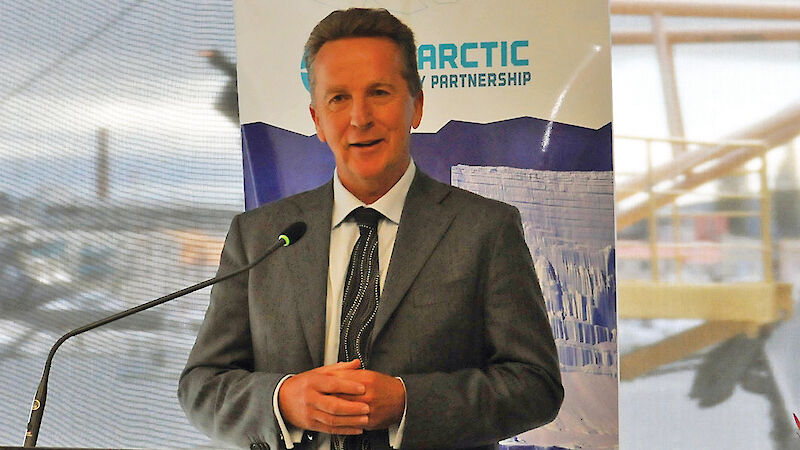In August I was privileged to take on the role of Director of the Australian Antarctic Division, at one of the most exciting times in Australia’s Antarctic history.
Top of my ‘to do’ list is continuing the good work started by our previous Director, Dr Tony Fleming, to support the delivery of an Australian Antarctic strategy and, as part of that strategy, replace our ageing icebreaker ship, Aurora Australis, with a new research and resupply vessel.
Australia has maintained an active interest in Antarctica for more than 100 years and these two significant projects will enable us to further our leadership in Antarctic science, policy and operations over the coming decades.
As the backbone of the Australian Antarctic program, our new icebreaker will play a critical role in Australia’s Antarctic future. The ship will provide a world-class scientific platform for conducting multi-disciplinary research in the Southern Ocean and sea-ice zone, and a flexible logistical platform for station resupply. The icebreaking performance alone (1.65m of ice at a speed of three knots, compared to the Aurora Australis’ 1.23 m of ice) will extend our potential operating season, while the 1200 tonne cargo capacity will increase our ability to carry equipment and infrastructure by 50 per cent. Our new ship will change the way we are able to work in Antarctica.
Continuing this vision, this Antarctic season will see us explore a new aerial logistics capability as we conduct up to five proof of concept flights to Wilkins aerodrome, in a C-17A Globemaster, with the Royal Australian Air Force (RAAF). These flights have the potential to enhance Australia’s logistical and scientific capabilities in the region and improve the RAAF’s capability for search and rescue and multi-casualty air evacuation.
You will not be surprised that I will bring to the role of Director a strong focus on our Antarctic science. I want to ensure that our opportunities to conduct our world class research are maximised and that we deliver the information we need to protect and understand Antarctica and our climate. It is through this research that our strategic collaborations with our neighbours are delivered.
My Executive and I will also continue to lead Australia’s engagement with the international Antarctic community to maintain and further develop relationships with other nations to achieve our scientific, environmental and operational goals. This will include negotiations through international bodies such as the Committee for the Conservation of Antarctic Marine Living Resources, the Antarctic Treaty Consultative Meeting, and the Council of Managers of National Antarctic Programs.
Our Australian Antarctic Program is already truly international and highly collaborative. This season, for example, we are involved in logistic collaborations with the United States, China, New Zealand, France and Italy, and recently we reached formal agreements to share logistics with the US, China, New Zealand and France during the 2015–16 season.
Chinese, French and Italian expeditioners will also use Hobart as a gateway for flights to and from Wilkins aerodrome on the Antarctic Division’s Airbus. And our science projects this season will involve collaborations with 21 countries and 150 international institutions. Our vision to see Hobart grow as an international gateway to Antarctica and an Antarctic science hub is happening!
As you’ll discover in this issue of the Australian Antarctic Magazine, this season will involve a major marine science project south of Heard Island to assess habitats, productivity and food webs on the Kerguelen Axis in the Indian Sector of the Southern Ocean. Land-fast sea ice studies off Davis will employ remotely operated vehicles underneath the sea ice. A wide-ranging geodesy research program will be active in the Prince Charles Mountains, east of Davis and in the Bunger Hills. And an airborne geophysics program conducted over a number of years will continue to use airborne instruments to investigate the Antarctic ice sheet over vast distances. These are just a few of the 94 active science projects across the program.
Dr Nick Gales
Director,
Australian Antarctic Division

